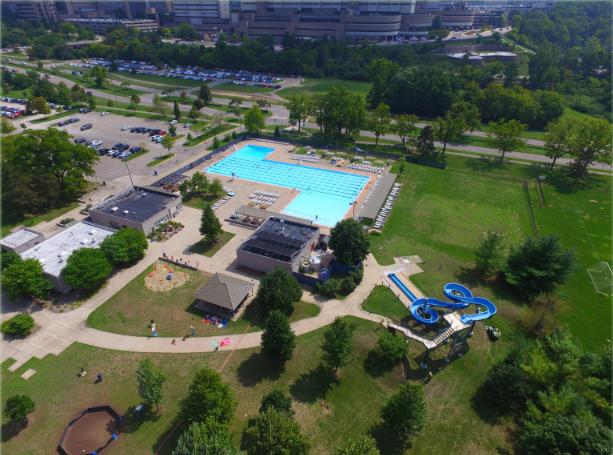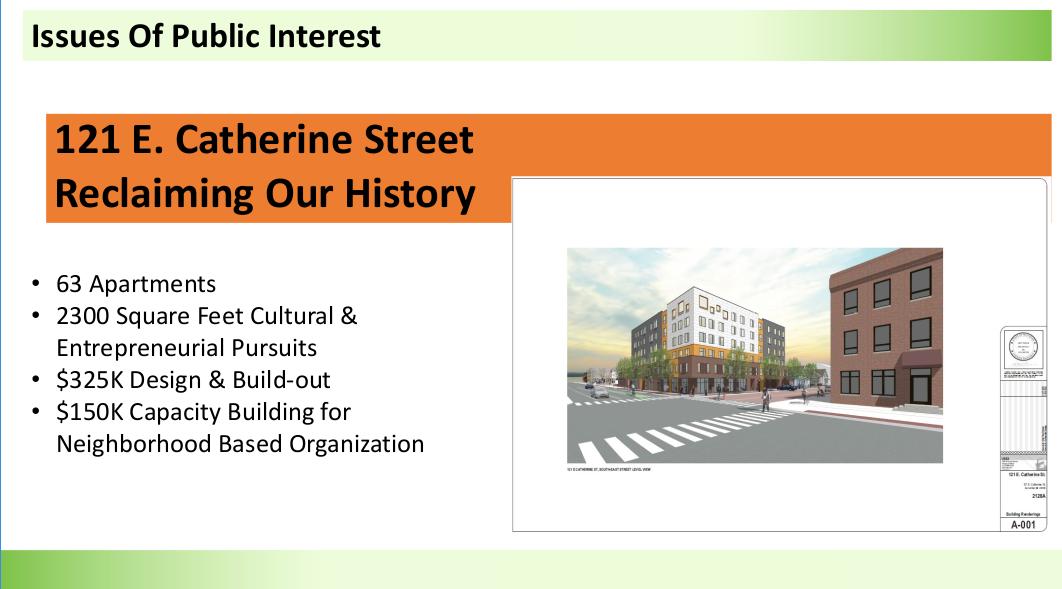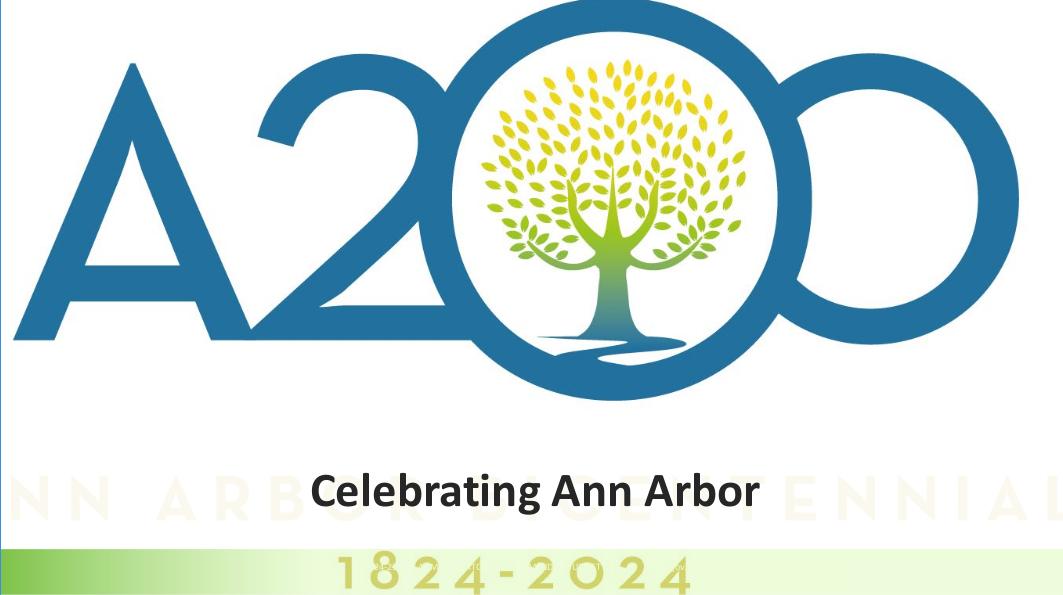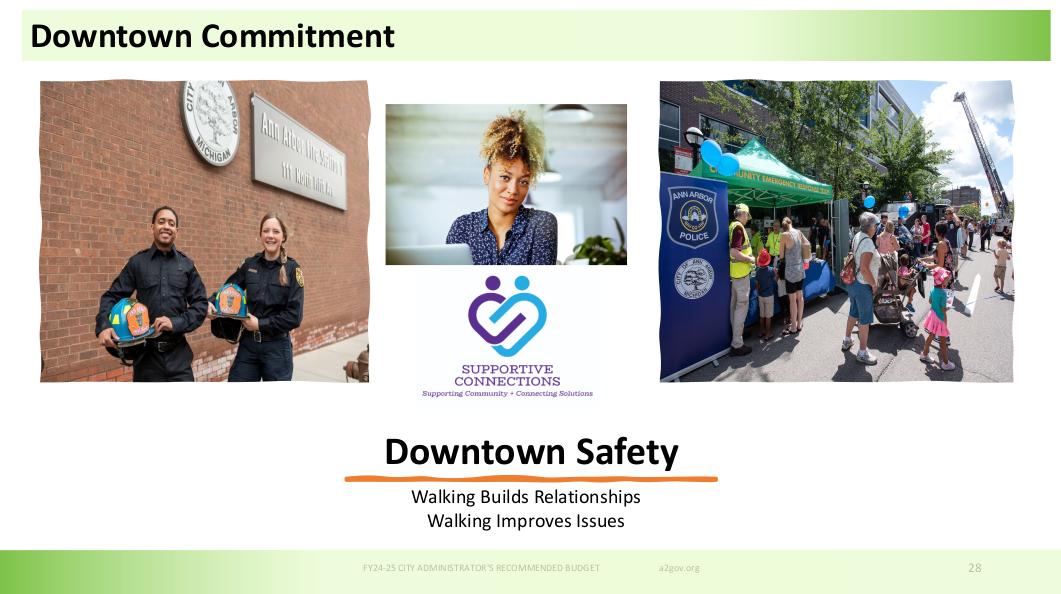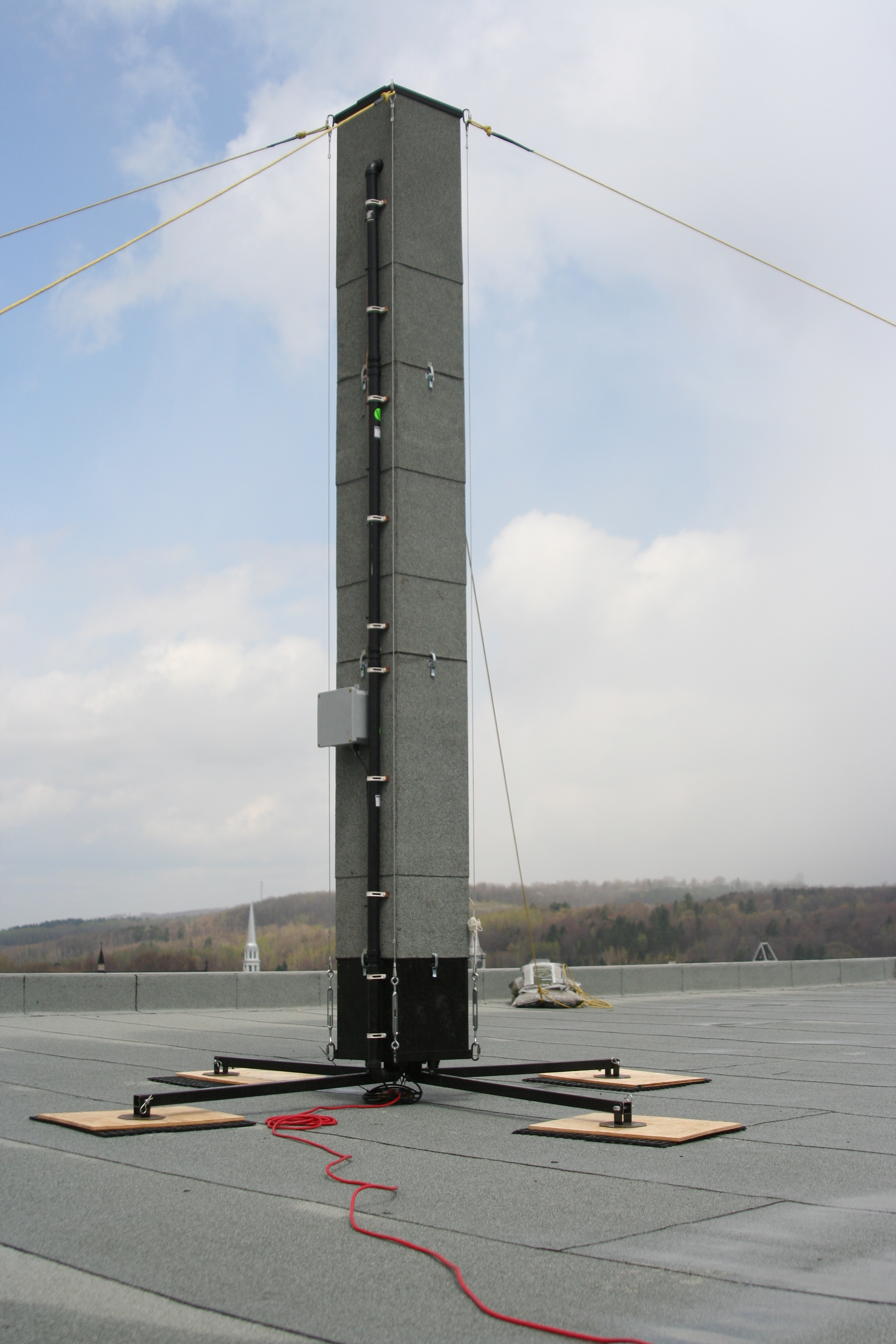The Ann Arbor City Council met on .
We finally got to see the city administrator’s budget presentation. I’ll walk you through it and give my thoughts. The contract for the comprehensive land use plan update was approved, with strong language about redressing segregation in our new plan, and also with the assumption that we will be creating density. Also, the 415 W Washington rezoning and concept plan were approved.
Meeting Details
| Date | |
|---|---|
| Agenda | Read the agenda here |
| Voting Chart | https://a2council.vote/post/council-meeting-2023-04-17/ |
| Youtube | Watch on Youtube |
| Live-tooting | Read my live-posted Mastodon Thread |
| Contact Your Rep | You can find your representative's contact info on the city's website. |
|---|---|
| Email the entire Council | You can email the entire city council at CityCouncil@a2gov.org |
Jude Walton
Jude Walton was a community activist who was recently murdered. She was a founding member of the Independent Community Police Oversight Commission. She worked for Avalon Housing, a nonprofit which provides supportive services and subsidized housing to low-income people. Many city council members mourned her loss, at the city council meeting.
Several councilmembers also thanked the police for arresting a suspect. I hope we don’t take from this the lesson that the police have done their job and now the community is safe, and we must continue to pour all of the city’s money into maintaining a large police force in order to keep us safe.
For one thing, the police did not keep Jude Walton safe. This suspect is someone who has been sent to jail many times by the police, and that wasn’t enough to keep Jude Walton safe. To me, this seems like evidence that our system of police and jails is not sufficient at promoting safety, and it would be fruitless to add more of these things.
Instead, I believe that instead of continuing to pour money into this system that does not work, we should invest more in the type of programs that Jude Walton worked for - subsidized housing with supportive services. Services that can provide treatment for mental health issues, help with substance use disorders, keep people safe, and help them be a part of the community. Instead of police and jails, we could be investing on more holistic solutions to public safety.
Councilmember Cynthia Harrison (Ward 1) said it best:
This is a traumatic time for our entire community. Fears could be potentially heightened at the moment and there will be temptation among some to hold up Jude Walton’s death as a call to arms for communities to pull back on initiatives such as affordable housing that work to break the cycle of homelessness and poverty. We have so many stories and data about the positive impacts of having a home on the lives of children and adults. We aren’t going to let what occurred - as horriffic as it was - derail the decades of work that she engaged in and those that she advocated for. What we must remember is that this is the act of one individual - a terrible, horriffic, and unimaginable act. We must not use this individual act to foster hate against multiple groups: People of color, the unhoused, returning citizens, people with a mental illness, and those who suffer from a substance use disorder. The best way for all of us to honor Jude, who was a pillar of our community, is to lift up the cause of affordable housing, which she spent 14 years fighting for. We can honor her legacy and uplift her spirit by supporting the work that she did and by supporting initiatives that provide housing, which everyone deserves.
Proclamations
There were two proclamations of observance periods made at this meeting:
- April is Arab American Heritage Month
- April 28 is Workers Memorial Day, to honor those who were injured on the job and redouble our efforts to promote workplace safety, through things like unions.
Presentation of the City Administrator’s Proposed Budget
City Administrator Milton Dohoney has prepared a proposed budget for the city for FY 2024-2025. This is important because budgets are moral documents. Whatever goes into the city’s budget is the things we actually care about, as a community. Watch what we’re funding, not what we say.
This is just the initial proposal. The city council will be discussing this budget and proposing amendments soon, in coming meetings. Keep your eyes on it! The city council will pass the final budget at its second meeting in May (Monday, May 15). So there is still time to contact city council and share your thoughts on this budget. There will also be a public hearing on the budget, presumably in its first meeting in May (Monday, May 1).
This presentation only covers a small portion of the budget, and doesn’t have the charts and tables of numbers that I would expect. I looked on the city’s budget process page, and it has a bunch of interesting video presentations listed from various departments, but I couldn’t find a summary table. Some of the individual departments have their presentations available for download as PDFs, at least.
Here is the complete proposed city budget.
But let’s see what the city administrator chose to highlight in his presentation at this meeting.
State Revenue Sharing
An important constraint that the city is operating under is that state revenue sharing is not going up, so we’re on our own. The state revenue sharing is money that the state gives to municipalities. It comes from the sales taxes that the state collects. Since the 90s, Republicans have been reducing the amount of money that the state shares with municipalities. Back in the day, the city had the voters approve a certain property tax amount for its operating millage, but didn’t even need to collect that entire amount, because the state revenue sharing paid for so much. But since then, the amount that the state shares has decreased, so the city has had to collect increasingly large percentages of its operating millage. If you’ve noticed your property taxes increasing over the decades, this is why. I had hoped that, with Democrats back in control of the state legislature, we might see that trend reverse, but not yet.
Pension Fund
Our pension fund is 90% funded. The city administrator said this is better than most pension funds, and means we don’t have a big burden to pay these pensions out of our general fund.
Public Restrooms
The city administrator proposes building some downtown restrooms using $200k from the money the city got from the federal government as part of the American Rescue Plan Act. We will be using stalls from the “Throne” company. The city will be working with the Downtown Development Authority to figure out where to place them. Personally, I hope that Liberty Plaza is one of those locations, and that it has a needle bin in it. AAATA is also involved, so drivers have a place to pee while they’re on their route.

121 E Catherine St
In 2019, the city council passed a resolution asking the Ann Arbor Housing Commission to evaluate all city-owned land for potential development of subsidized housing. After undertaking the analysis, the Ann Arbor Housing Commission came back with its recommendations. They said that 121 E Catherine St is their top priority to develop this parking lot as subsidized housing (63 apartments).
But that’s not why this deserves a special mention in the budget. There is plenty of money to develop this lot in this way. Chiefly, by having the Ann Arbor Housing Commission apply for federal Low Income Housing Tax Credits, which they don’t need, since this is city-owned property which will not owe property taxes. But they sell these tax credits at below-face-value to other companies to reduce their tax burden. This is the main method that subsidized housing is funded in the city. Another way that the city might get money for the development at 121 E Catherine St is using the Affordable Housing Millage that was approved by voters in 2020.
The reason this has a special line item in the budget is that the first floor of 121 E Catherine St is planned to be a community center to promote African American cultural and entrepreneurial pursuits. This fits with the history of the neighborhood, which has been the part of time with a high African American population, and has been a center of the community. This area also continues to be host to the African American Downtown Festival every year. This year, the African American Downtown Festival is happening on , at 4th and Ann St.
To build the community center means doing neighborhood outreach, and that means hiring people and doing work. Therefore, $150k is allocated in the budget to build this community organization.
Bicentennial Celebration
2024 is Ann Arbor’s bicentennial. The city is planning to do a bunch of stuff for the bicentennial celebration. Seemingly a lot of stuff, since the city administrator is proposing to spend $200k in the FY 2024 budget and another $200k in the FY 2025 budget.
What will this money be funding? It sounds like the biggest expense will be upgrades to Fuller Park, which will be renamed “Bicentennial Park”. The new amenities that the city administrator mentioned were:
- A universal access splash pad
- Geothermal heating and cooling for the indoor structures
- A sculpture to honor former Olympians
- Sensory trails
- A Sculpture to pay tribute to indigenous land holders.
The way I see it, if we really want to pay tribute to indigenous land holders, we ought to actually give them their land back. We could deed fuller park to the Saginaw Chippewa. Maybe if we ask nicely, they’ll let us rent the land from them to use as a park, but once we’ve given it to them, it’s theirs to do with as they please. In my view, that would be the best way to honor this community.
Unarmed Response
In 2022, the city council passed its resolution about what to do with the $23m that the city would receive from the American Rescue Plan act. Among the allocations was $3.5m to start a program of unarmed response. The idea was to have someone you can call who is not the police. The police sometimes behave in dangerous ways and can hurt or kill people. If your intent is to get help for a loved one who is experiencing a mental health crisis, and you call 911, that loved one may end up murdered instead of helped, as happened to Aura Rosser here in Ann Arbor in 2014. Therefore, people may choose not to call 911 to get help for people who they want helped and not killed.
So instead, we could create a different program - a way to get experts out to someone who needs help, and make sure that these experts are unarmed, and are not police, and therefore more likely to help and less likely to kill. This program may work similarly to the CAHOOTS program in Eugene, Oregon.
But how exactly will the program work? In June 2022, the city council passed a resolution to hire a consultant for $100k to conduct public engagement to gather ideas for how the program should work. And amended the contract in October 2022 to include $5,000 to pay participants for their time.
I certainly hope that this goes better than the 2017 Hillard Heintze contract to figure out how to create a police oversight commission. That resulted in a disastrous report that was completely unacceptable to the advocates who were trying to create a police oversight commission, and had to be completely ignored when designing the Independent Community Police Oversight Commission.
For the unarmed response program, the relevant advocates are the Coalition for Re-envisioning Our Safety (CROS). I hope their ideas are considered.
So, why did the city administrator bring any of this up in the budget discussion?
He mentioned the $3.5M in ARPA money to get the program started, and also said that $250k would be allocated from marijuana tax money in each of FY2023, 2024, and 2025, to run the program. We’ll have a more realistic picture of what kind of money it takes to run the program once we get it off the ground, which we won’t do until that consultant report comes back.
Downtown Safety
The city administrator mentione creating a new team for “downtown safety”. The team would walk around downtown and talk to people and see if they need help. The team will consist of someone from the city’s Supportive Connections department, an EMT from the fire department, and … a police officer.
I think those first two are a great idea, and the last one is such a bad idea that it negates the other two. Do we want to help people? Great, send supportive connections and EMTs. Do we want to hurt people and throw them in jail? Great, send police. But if we want to give people help, we would be most effective if the people could be honest with the people who are trying to help them. But people who need help are going to be less likely to be honest about the help they need when there is a police officer around. Police officers are too likely to inflict harm on a person needing help, or their friends. For example, If a person needs help because of a substance use disorder, or knows someone who needs help for that reason, it is not safe to discuss this in front of a police officer who might arrest them instead of helping them. Meanwhile, even in an innocuous conversation, police will be gathering intelligence that they can use to suppress the community.
So I sincerely hope they rethink this program to have only the EMT and supportive connections.
Election Center
City Administrator Dohoney says he wants to buy a new building. He expects this to be a 7-figure land transaction, and cost $300k annually for operating expenses. This building will house CTN, an Emergency Operations Center, and a new Election Center.
The Election Center will be some sort of operations center for elections. They intend to have 9 days of early voting.
The Emergency Operations Center will be where they coordinate the city’s response to emergencies. City administrator Dohoney said that if they had an emergency operations center, it would’ve been activated for the snow storm, the ice storm, and the vice president’s visit. Instead, they rely on the University of Michigan to donate space for temporary emergency operations centers for each emergency.
Compensation Study
City Administrator Dohoney said that the city’s compensation is not competitive. Therefore, talented city staff leaves their jobs for more lucrative ones in the private sector, or simply choose not to come work for the city in the first place. Furthermore, it remains to be seen that compensation levels are equitable. It may be that women or people of color are making less than they should, given their positions.
In order to sort this all out, the city administrator proposes undertaking a compensation study, and hiring a consultant for $150k to do it. Then we will be able to reassess compensation levels.
Better Office for Supportive Connections
The city’s Supportive Connections department is currently on the 4th floor of the Justice Center, which has the police station and the courthouse. That means that people who need supportive services have to pass through a metal detector and be searched, and aren’t allowed to bring phones in, and then end up in a cramped office.
The city administrator proposes remodeling city hall, to build a new Supportive Connections office on the first floor of city hall, using money from the opioid settlement. That seems like a reasonable use of that money.
I wish that the new Supportive Connections office included a safe consumption center.
Redevelop City Hall
The City Administrator said that the city will need more revenue. He proposes redeveloping city hall, to put market-rate housing there. I didn’t totally understand the plan, from the presentation. Will they be knocking down city hall and finding office space elsewhere? Will they be knocking down city hall, and developing a new building with office and residential, and then putting the city offices in the office part? I don’t know. He did mention that city hall doesn’t need as much space as it used to, now that so many of the city’s staff work from home.
I just hope they keep the city’s services downtown and resist the temptation to get a new office out in car-land where it is inaccessible.
Market-Rate Development at the Kline Lot
The City Administrator also proposed raising revenue by selling the Kline Lot for market-rate housing development. The Kline lot is a city-owned parking lot downtown.
When the Ann Arbor Housing Commission did its study of the feasibility of affordable housing at each underutilized city-owned property, they suggested developing the Kline lot as affordable housing, after public engagement. They deemed this spot as more complicated than some of the others that were proposed, so it hasn’t yet become their top priority. I can’t find it, but I swear I remember a presentation in which Jen Hall, director of the Ann Arbor Housing Commission, said that the Kline Lot was so large that it would be hard to build something there that was all subsidized housing funded by federal Low-Income Housing Tax Credits, and that we might have to do something else in order to get that space developed. I hadn’t thought that she was suggesting selling the lot for entirely market-rate development. I was expecting a proposal more like what we have with the old Y Lot, at 350 S. Fifth, or the county’s Veridian at County Farm Park project, where part of the lot will be developed as federally-subsidized housing and the other part as market rate housing.
It may be that we need the money we would get from selling the entire lot, or that we need the money we would get from the property taxes on the entire lot. Or it may be that it is possible to develop some of this as subsidized housing after all. I would like to hear more about this proposal. Here is the report from public engagement that was done about this lot.
Unallocted $1M
The City Administrator’s proposed budget leaves $1M unallocated, from the money that the city gets from the marijuana sales tax. What will the city council do with this money? That will be decided in the next couple of meetings, and with your input. You can email CityCouncil@a2gov.org.
He also said that, in each previous year since the legalization of marijuana in 2018, the city has gotten more money from the marijuana tax than it did the previous year. But this year, for the first time, our marijuana tax income has plateaued.
Therefore, it is your civic duty to buy more marijuana! Come on, people! The city needs income to help people!
Defund the Police??
One thing I did not hear enough about in this presentation is defunding the police. He didn’t explicitly say anything about allocating more money to the police, but he didn’t say anything about allocating less, either. And he didn’t show the summary tables of the proposed budget, either, so I don’t know how mad I am yet.
Last I checked, the city was spending more than $30m per year on police - a program that hurts people and is not effective at helping people. If we spent anywhere near that much on subsidized housing, mental health care, and supportive services, there would be far fewer problems.
The Comprehensive Plan Update
The Comprehensive Land Use Plan update was something I talked about more extensively in my preview post that I wrote before this meeting. Essentially, the Comprehensive Land Use Plan is what the city can use to guide its zoning and planning priorities. Our current Comprehensive Land Use Plan contains elements that were designed when car-centric, suburban life was thought to be desirable. We now know that it is bad for the cultural development of cities, bad for equity and affordability, and bad for the planet, so it is good that we will develop a new plan based on these values.
I have high hopes for this process, because the resolution approving the contract includes these as explicit goals:
- Develop recommendations and policies that promote fewer zoning districts or categories, that contain more flexibility for re-use and adaptability over time;
- Recommendations and policies that undue [sic] and/or seek to repair past land use policies and regulations that resulted in exclusion of people based on race, income or other characteristics and other inequities.
The thing the city council passed at this meeting was a contract with “Interface Studio LLC” for $700k to develop a new Comprehensive Land Use plan that is targeted to be ready in June of 2024. The time between now and then will be used for extensive public input, and I hope that the public input is designed to gather a representative set of people, rather than just the ordinary folks who jump up to volunteer for this sort of thing. And I hope that this representative set of people includes not just people who live in Ann Arbor now, but also people who could and would live in Ann Arbor if our land use was less exclusionary.
415 W Washington Zoning and Concept Plan
The city council passed a PUD rezoning and Concept Plan for 415 W Washington, which has been an abandoned city building and a parking lot for decades. It was considered for subsidized housing development, but it turns out that the lot is entirely in the flood plain and the flood way, and it is too close to railroad tracks, so it doesn’t qualify for federal Low-Income Housing Tax Credits, which are the main way that the Ann Arbor Housing Commission funds its subsidized housing.
Therefore, the plan is to sell this land to a developer. The city can then use the sale money, and the property taxes, for affordable housing purposes, and also require the developer to have some of the apartments reserved as non-subsidized below-market-rate housing, but allow the developer to pay a fee instead of providing this housing onsite. That money can then go toward providing subsidized housing elsewhere.
The reason for the city to pass this zoning and concept plan is that it will make this deal more attractive to developers, knowing that the regulatory hurdles have been cleared. The developer will still have to create a Site Plan, which must be accepted by the city’s planning staff, but the risk for a developer is much lower than buying the land not knowing what, if anything, they will be allowed to build.
The developer must also undertake a soil remediation project, because this land is contaminated with dangerous chemicals that are left over from when this building was used to service city-owned vehicles. Any development here will come with a “brownfield plan”, where the developer will pay upfront to remediate the soil, and then the city will slowly pay them back over the years, in the form of reduced property taxes. The details of this brownfield plan will be hammered out if and when a developer decides to develop this site.
The concept plan and zoning that were passed at this meeting call for some of the land to be reserved as part of the Treeline Trail - a publicly-accessible, nonmotorized path which is not directly adjacent to a road with cars.
This plan also calls for the preservation of the historic chimney that’s at the site, which is a habitat for chimney swifts. Purpose-built Chimney Swift towers can be made for as little as $600, but people also like historic preservation, as well as natural preservation, so they want the chimney.
The rezoning and concept plan were approved by city council. Now, we just have to find a developer who’s willing to take up the project. 🤞.
The concept plan calls for 5 stories, and 157 units. 15% of these units (min 15 units) would be below-market-rate, or require a contribution to the affordable housing fund instead.
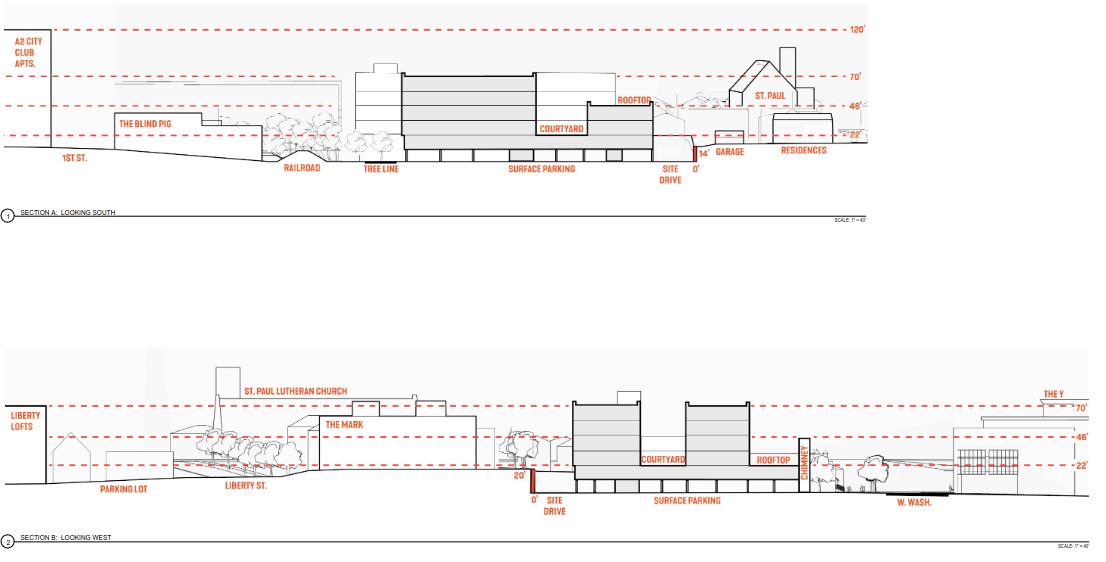
From the concept plan
No Food Trucks at the Center of the City
I wrote in my preview post for this meeting about the Center of the City, and how the Council of the Commons has taken years to develop something at the Library Lot, which has a special significance in the city’s charter, due to a ballot initiative passed in 2018.
The Council of the Commons asked city staff to look into the feasibility of having food trucks at the Library Lot, and city council approved that request. City staff wrote this memo, which says that it was not at all feasible.
There were seven public commenters who spoke at this meeting to say that it’s time to put this project out of its misery, and pass a new charter amendment to allow something else to be done here. And one to say that we should continue the project.
There were no votes to be taken at this meeting about it.
New Contract for Gelman Litigation
The city council approved $150k to spend on hiring a lawyer to deal with litigation on the Gelman plume. Councilmember Disch explained that previous court orders have mandated that, if the pollution passes certain thresholds, the polluter has to take new actions, including creating new monitoring wells. The polluter has not done this, so the city has to take additional court actions to get the court to enforce its previous order.
Antisemitism
This meeting happened on Yom HaShoah, Holocaust Remembrance Day. Local antisemite Henry Herskovitz came to speak holocaust denial. No member of the audience stopped or heckled him. He was allowed to complete his remarks peacefully and leave the building calmly. No other public commenter after him said anything about it, because they had precious time to deliver the remarks they had prepared. But several councilmembers spoke against what they had heard.
I wish there were something that could be done to make this person feel less confident about going up there and speaking these things. Jewish members of the community deserve to participate in their local government without having to listen to hate speech directed against them.

